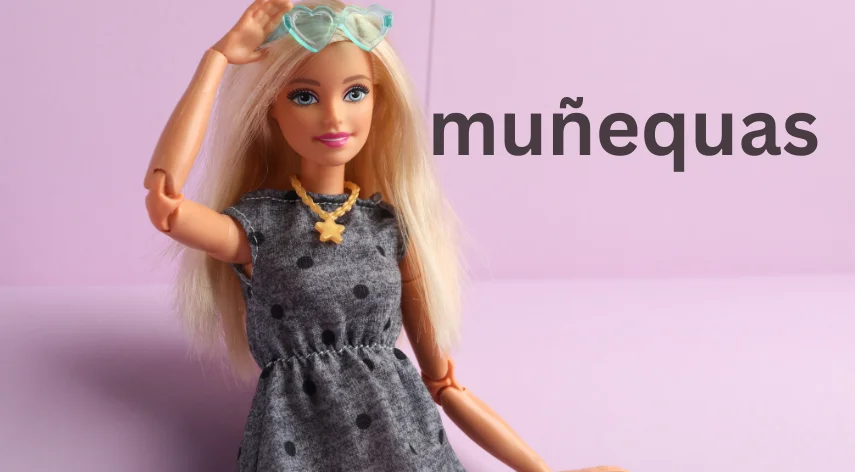Muñequas: Cultural Icons of Art and Tradition
Muñequas, originating from Spanish-speaking cultures, occupy a significant place in the realms of art, culture, and heritage. These small dolls, often intricately crafted, carry profound cultural symbolism and historical significance, reflecting the rich legacy of their origins.
Types of Muñequas
Traditional muñequas are frequently handcrafted using materials such as wood, clay, or fabric, showcasing remarkable craftsmanship and attention to detail. In contrast, contemporary versions may incorporate modern materials and designs, blending traditional aesthetics with modern sensibilities.
Historical Significance
Throughout history, muñequas have evolved alongside societal changes, reflecting shifts in cultural values and artistic styles. From ancient civilizations to modern-day societies, these dolls have served as both playthings and cultural artifacts, preserving traditions and narratives across generations.
Making of Muñequas
The process of making muñequas varies depending on the materials and techniques employed. Traditional methods often involve skilled craftsmanship, with artisans meticulously sculpting and embellishing each doll by hand. In contrast, modern production techniques may utilize machinery and mass production to meet demand.
Significance in Art and Craft
Muñequas are not just playthings but also objects of artistic expression, with their intricate designs and craftsmanship often garnering appreciation from collectors and enthusiasts alike. From folk art to high-end collectibles, these dolls showcase the diverse range of artistic styles and techniques employed by craftsmen.
Muñequas in Different Cultures
While muñequas are most commonly associated with Hispanic cultures, variations of these dolls can be found across different regions and communities worldwide. Each culture infuses its unique traditions and symbolism into the design and meaning of these dolls, contributing to their rich diversity.
Muñequas in Childhood and Play
For many children, muñequas serve as companions and playthings, fostering imaginative play and storytelling. Beyond entertainment, these dolls also play a role in education, teaching children about cultural traditions and fostering empathy and creativity.
Collecting Muñequas
Collecting muñequas has become a popular hobby for enthusiasts worldwide, with collectors often seeking out rare or unique specimens to add to their collections. The muñeca collecting community provides a platform for enthusiasts to share their passion and knowledge about these beloved artifacts.
Muñequas in Fashion and Design
The influence of muñequas extends beyond the realm of toys, inspiring fashion designers and artists to incorporate their aesthetic elements into clothing, accessories, and decorative items. From runway fashion to streetwear, muñeca-inspired designs continue to captivate audiences with their whimsical charm.
Muñequas in Literature and Media
In literature and media, muñequas have been depicted in various forms, ranging from children’s books to art films. These representations often explore themes of identity, culture, and tradition, providing insights into the significance of muñequas in different contexts.
Social Impact of Muñequas
Muñequas have also played a role in shaping societal perceptions of gender and identity, with their diverse representations challenging traditional stereotypes and norms. In recent years, muñequas have become symbols of empowerment and activism, advocating for inclusivity and representation in the toy industry.
Muñequas and Tourism
For tourists, muñequas represent more than just souvenirs; they embody the cultural heritage and traditions of the places they visit. Tourist destinations often feature muñeca-themed attractions and events, attracting visitors eager to experience the charm and authenticity of these cultural artifacts.
Future of Muñequas
As society continues to evolve, muñequas will likely adapt to changing trends and preferences, embracing innovation while preserving their cultural roots. However, as mass production and globalization pose challenges to traditional craftsmanship, efforts to promote sustainability and ethical production practices will be crucial in safeguarding the legacy of muñequas for future generations.
Conclusion
Muñequas stand as timeless symbols of culture, tradition, and artistic expression, bridging the past with the present and inspiring generations to come. Whether as playthings, collectibles, or cultural artifacts, these dolls continue to captivate hearts and minds worldwide, enriching our lives with their beauty and significance.
FAQs about Muñequas
- What are muñequas? Muñequas are small dolls, generally handcrafted, that hold cultural and symbolic significance in various Hispanic cultures and beyond.
- How are muñequas made? Muñequas are made using a variety of materials and techniques, including wood carving, clay sculpting, and fabric stitching, depending on the cultural tradition and artisan’s preferences.
- What is the cultural significance of muñequas? Muñequas often represent cultural heritage, traditions, and beliefs, serving as symbols of identity, storytelling, and artistic expression within their respective communities.
- Can muñequas be considered art? Yes, muñequas are often regarded as art objects due to their craftsmanship, aesthetic appeal, and cultural significance, attracting collectors and enthusiasts worldwide.
- Are there any famous muñequas? Several muñequas have gained popularity and recognition, both for their historical significance, artistic merit, or cultural symbolism. Examples include traditional folk dolls like the Maria doll from Mexico and contemporary collectibles like the Barbie doll.




